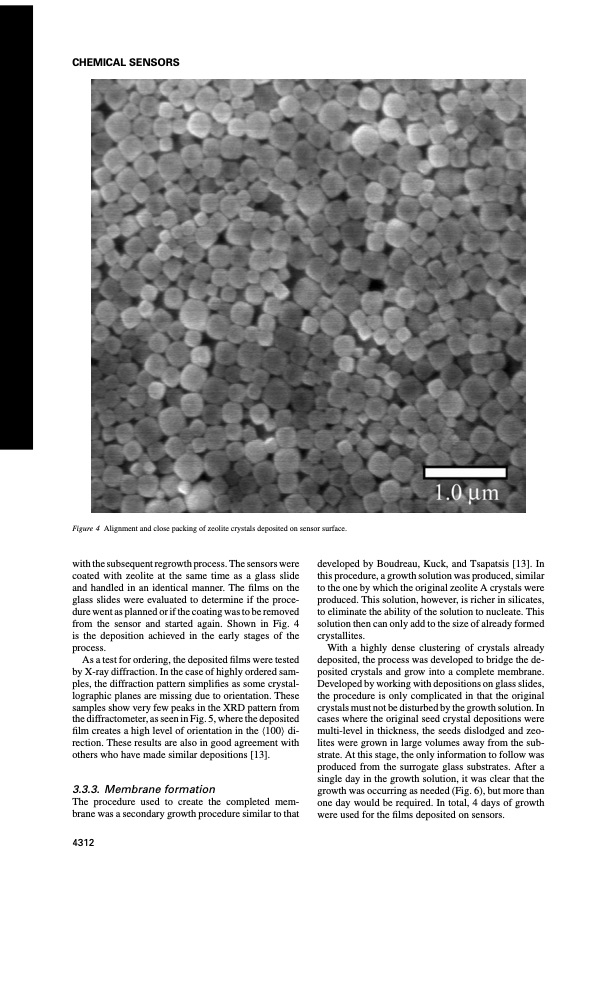
PDF Publication Title:
Text from PDF Page: 006
CHEMICAL SENSORS Figure 4 Alignment and close packing of zeolite crystals deposited on sensor surface. with the subsequent regrowth process. The sensors were coated with zeolite at the same time as a glass slide and handled in an identical manner. The films on the glass slides were evaluated to determine if the proce- dure went as planned or if the coating was to be removed from the sensor and started again. Shown in Fig. 4 is the deposition achieved in the early stages of the process. As a test for ordering, the deposited films were tested by X-ray diffraction. In the case of highly ordered sam- ples, the diffraction pattern simplifies as some crystal- lographic planes are missing due to orientation. These samples show very few peaks in the XRD pattern from the diffractometer, as seen in Fig. 5, where the deposited film creates a high level of orientation in the ⟨100⟩ di- rection. These results are also in good agreement with others who have made similar depositions [13]. 3.3.3. Membrane formation The procedure used to create the completed mem- brane was a secondary growth procedure similar to that developed by Boudreau, Kuck, and Tsapatsis [13]. In this procedure, a growth solution was produced, similar to the one by which the original zeolite A crystals were produced. This solution, however, is richer in silicates, to eliminate the ability of the solution to nucleate. This solution then can only add to the size of already formed crystallites. With a highly dense clustering of crystals already deposited, the process was developed to bridge the de- posited crystals and grow into a complete membrane. Developed by working with depositions on glass slides, the procedure is only complicated in that the original crystals must not be disturbed by the growth solution. In cases where the original seed crystal depositions were multi-level in thickness, the seeds dislodged and zeo- lites were grown in large volumes away from the sub- strate. At this stage, the only information to follow was produced from the surrogate glass substrates. After a single day in the growth solution, it was clear that the growth was occurring as needed (Fig. 6), but more than one day would be required. In total, 4 days of growth were used for the films deposited on sensors. 4312PDF Image | Development of a selective gas sensor utilizing zeolite membrane

PDF Search Title:
Development of a selective gas sensor utilizing zeolite membraneOriginal File Name Searched:
2003-79-J-Mat-Sci-Rauch.pdfDIY PDF Search: Google It | Yahoo | Bing
CO2 Organic Rankine Cycle Experimenter Platform The supercritical CO2 phase change system is both a heat pump and organic rankine cycle which can be used for those purposes and as a supercritical extractor for advanced subcritical and supercritical extraction technology. Uses include producing nanoparticles, precious metal CO2 extraction, lithium battery recycling, and other applications... More Info
Heat Pumps CO2 ORC Heat Pump System Platform More Info
| CONTACT TEL: 608-238-6001 Email: greg@infinityturbine.com | RSS | AMP |